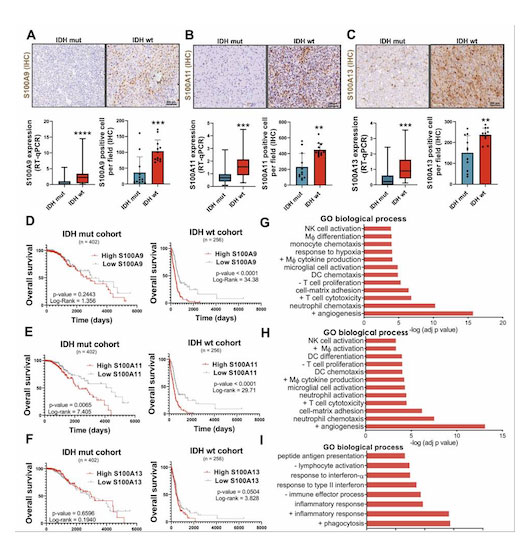Role of S100A Proteins in Glioblastoma Microenvironment
Cómitre-Mariano B, Segura-Collar B, Vellila-Alonso G, Contreras R, Henandez-Lain A, Valiente M, Sepulveda JM, Marcus SG, García-Posadas G, Jiménez-Roldán L, Perez-Nuñez Á, Gargini R. "S100A proteins show a spatial distribution of inflammation associated with the glioblastoma microenvironment architecture." Theranostics. 2025 Jan 1;15(2):726-744.
Glioblastoma (GBM), particularly the IDH wild-type variant, is an aggressive brain tumor characterized by inflammation-driven progression. A recent study by Cómitre-Mariano et al, (Theranostics 2025) has elucidated the differential roles of S100A proteins—S100A9, S100A11, and S100A13—in defining the tumor microenvironment (TME). The spatial and cellular localization of these proteins suggests unique roles in hypoxia, vascularization, and microglial function. This research underscores the importance of S100A proteins in shaping the TME of GBM and provides a foundation for developing inflammation-targeted therapies.
Key Findings:
S100A9 is predominantly expressed in hypoxic and necrotic tumor regions, where it is linked to myeloid-derived suppressor cells (MDSCs). Its expression associates with hypoxic inflammation, contributing to an immunosuppressive tumor microenvironment (TME) and correlates with poor patient prognosis.
S100A11 localizes to vascular areas and links to perivascular inflammation. It promotes tumor progression by enhancing vasodilation, proliferation, and the recurrence of glioblastoma (GBM).
S100A13 is expressed in microglia at the leading edge of the tumor. Its role involves regulating glioma invasion rather than influencing aggressiveness.

The study features two Atlas Antibodies’ products used in immunohistochemistry (IHC) and immunofluorescence (IF):
Anti-S100A13 (Cat. HPA019592) to identify S100A13 in tumor peripheries, showing colocalization with microglial markers (e.g., P2RY12). This marker revealed increased expression in tumors with higher microglial content and was confirmed to be co-expressed with microglial markers, suggesting its contribution to microglial activation in GBM.
Anti-P2RY12 (Cat. HPA014518) to label microglial cells, enabling the assessment of S100A13-positive microglial activation. This marker confirmed the microglial localization of S100A13 in peripheral tumor regions, supporting its association with neuroinflammation at the tumor’s invasive edge.
